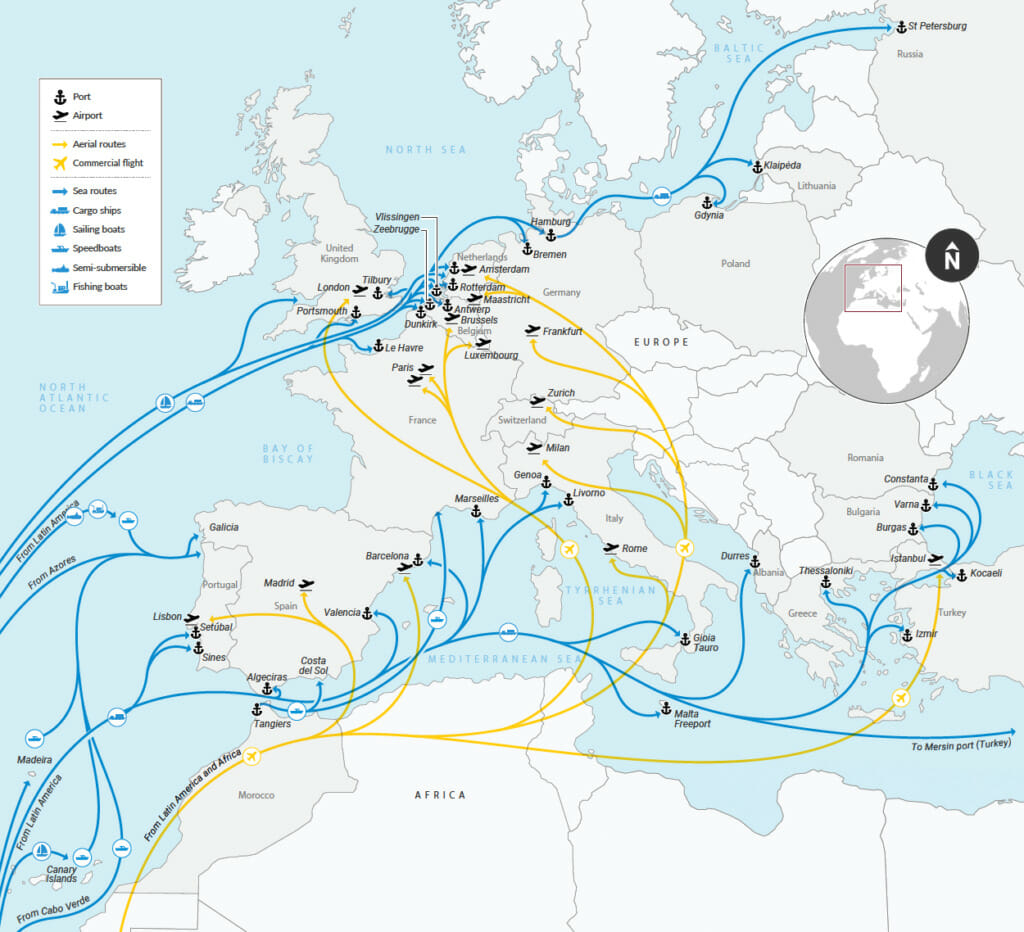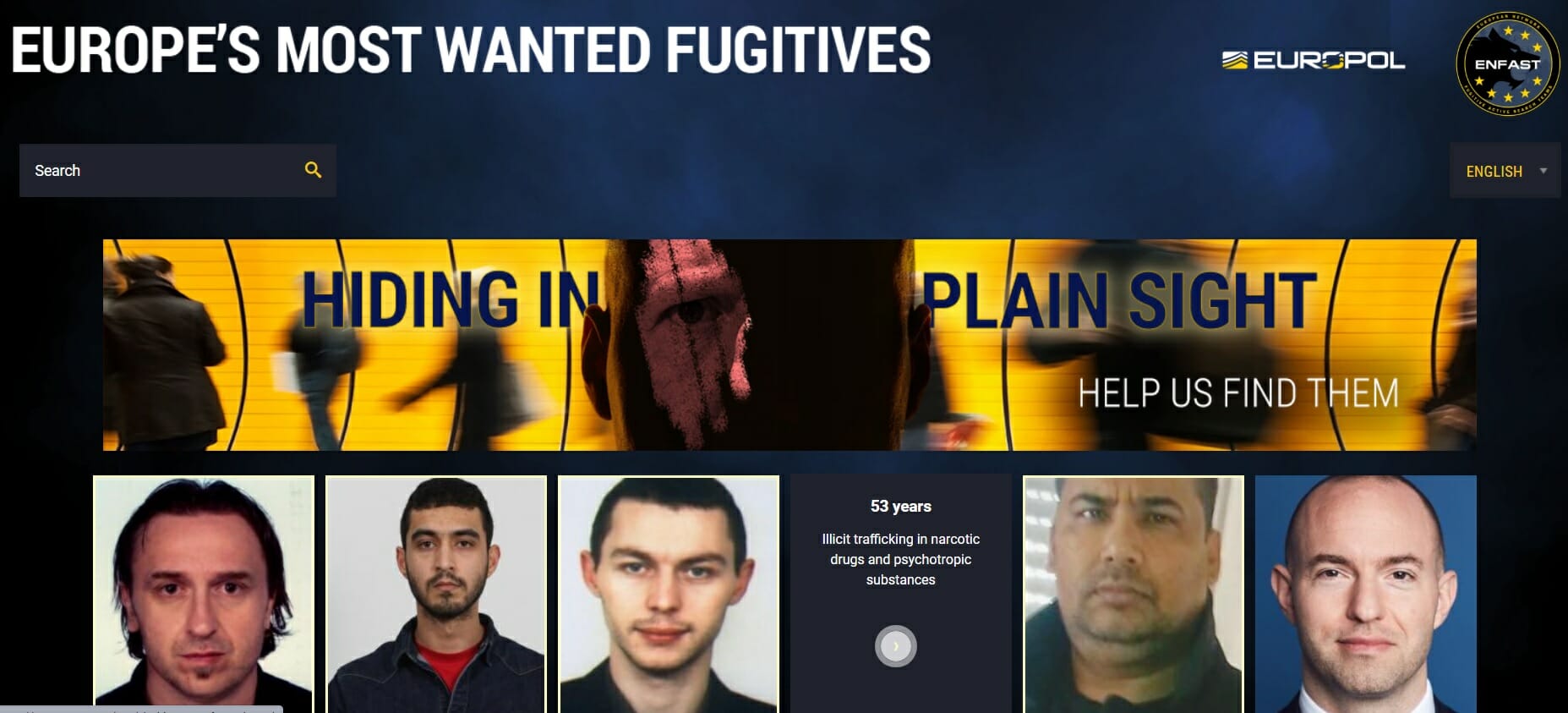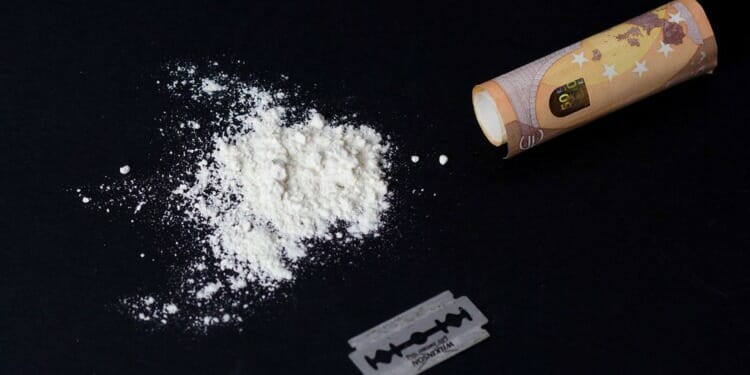Europe has now replaced America as the main market for cocaine. As the Wall Street Journal said in a recent article, Antwerp, the “number 1 port in Europe for cocaine busts” is a “repeat of Miami in the 1980s.” The surge in drug use, and especially of cocaine in Europe is most certainly functionally linked to the pandemic as Covid lockdowns lead to personal reactions that all too often include drug-taking.
The pandemic, in short, adds to the well-known existential issues presented by cocaine: People all too often forget that cocaine is not only a major and obvious threat to human health but also a continuing cause of environmental destruction, particularly in some of the major tropical rainforests of the world that are essential carbon sinks. The way cocaine is produced in illegal labs, using lethal chemicals to purify it, leads to irreversible environmental damage wherever those labs are located.
So every time a friend of yours sniffs cocaine, he or she achieves two things at once, self-harm and environmental damage. A double whammy. But as I hope to show in this article, the damage doesn’t stop there. Surges in cocaine use provide the global networks of organized crime with golden opportunities that they are quick to seize. Moreover, they take advantage of the digital revolution and the Internet that make it exceedingly easy to use encrypted channels of communications and cryptocurrencies, escaping detection.
In short, criminal networks expand along with the surge in drug use and pause a growing threat to public order.
European police rise to the challenge
Yet the police are working hard. Arrests on drug charges are becoming almost a daily occurrence across Europe along with the rising use of drugs, especially cocaine. The most recent at year-end occurred on Dec 6 in Scotland:
We can confirm that three people have been charged after drugs valued at over £500k were seized as part of a proactive operation in the Mastrick area over the weekend.
READ MORE: https://t.co/jrKWr0f2oU pic.twitter.com/riL9C8NL3E
— North East Police (@NorthEPolice) December 6, 2021
2021 was on track to become a record year for seizing cocaine and the police were active across Europe, ratcheting up operations against organized crime. For example, Europol, the European Union crime agency, reported in December that the police in Spain, France and Belgium had broken up a drug trafficking ring believed to be smuggling tons of cocaine and hashish by speedboat from Morocco to Europe. Seventeen people were arrested by the Spanish police, including 11 Spaniards and six Moroccans. The alleged ringleader, a Moroccan suspected of being a major importer of drugs into Europe, was among those arrested.
The crimes don’t stop with drug smuggling. Gang members were also accused of laundering their proceeds from drug sales. Police believe they used cash-intensive businesses, including two Barcelona restaurants, and bought property to conceal illicit income.
Drug routes into Europe are extensive, mostly originating in South America and Africa, and deliver the drug to the continent’s most lucrative markets in Northern Europe:

Earlier in the year, in February, Rene Matschke who heads the Hamburg customs investigation office presented what he said was his biggest haul to date: 16 metric tons of cocaine (35,270 pounds). “We are estimating a street sales value of between €1.5 billion and €3.5 billion ($1.8 billion and $4.3 billion) for the 16 tons,” Matschke told news agency AFP. It had been hidden in tin cans that should have contained putty.
Shortly thereafter, another, even bigger haul of 23 metric tons (25 US tons) of cocaine was made, with a street value of billions of euros in a cross-European drugs bust in the Netherlands, Belgium and Germany. The cocaine was hidden inside containers from Paraguay. The 28-year-old owner of an import company in the major port city of Rotterdam was arrested in the Netherlands over the illicit cargo.
In Antwerp, authorities have seized 88 metric tons of cocaine stashed in containers from Latin America in 2021, nearly 10 times the figure in 2014.
Some investigations take years to unfold but then, the results are noteworthy. For example, an investigation triggered in November 2018 after authorities seized a shipping container in Santos, Brazil, finding that the shipment was addressed to a company in Berlin led to a probe into a widespread smuggling network that dated back to 2011 and had transported drugs through Colombia, Panama, and Mexico. Eventually, 14 suspects were arrested on November 30, 2021, accused of bringing nearly five metric tons of cocaine to Germany in nine shipments from Brazil, Colombia, and several other countries.
But it’s not just the police in Europe that are active. Among the more notable busts abroad, on November 18, 2021, the Brazilian Federal Police dismantled an organization that was shipping cocaine to Europe by sea. About 150 agents served 36 search and seizure warrants, six arrest warrants and four temporary arrest warrants in several states, including São Paulo and Bahia. Drug shipments were made to Belgium, Spain and Portugal. The gang leader, known as Don Corleone, a reference to the mafia character from the movie The Godfather, was among those arrested (but the police did not reveal his real identity).
The drug dealers arrested in Brazil were also found to recycle their illicit gains just as their European partners in crime do. In this connection, the Brazilian police ordered the breach of banking and tax secrecy for 66 people, including 39 legal entities allegedly used by individuals under investigation for money laundering.
The problem is so widespread and so deeply intertwined in the lives of normal citizens, that this fall, Europol resorted to an unusual strategy to help identify this type of crime. With a campaign launched across Europe, Europol is asking normal citizens like you and me to help them track down criminals – murderers, certainly, but also most importantly, people engaged in drug trafficking. If you visit the EU Most Wanted website you have an opportunity to review the mug shots of fugitives and “provide vital information and help find a fugitive”:

Why cocaine use has surged in Europe in 2020 and 2021
In September last year, Europol released an important report pointing to the rise of cocaine in Europe in 2020 and 2021, particularly since the start of the pandemic. Titled Cocaine Insights, the series was launched Sept 2021 and reported that some 4.4 million people used cocaine in the past year in Western and Central Europe alone, making it the second most popular drug in the region after cannabis. And the Netherlands and Belgium were found to have supplanted Spain as the main gateways into Europe for cocaine.
Cocaine use had been rising in Europe even before the pandemic, but there was general speculation that the pandemic had made matters worse as it adversely affected employment and caused breaks and deviations in global supply chains. Such breaks, in principle, provide a perfect opportunity for criminal gangs to insert themselves in the international trading system – and the coincidental rise of encrypted communication channels and cryptocurrencies would have made it all the easier to engage in illegal operations and escape detection.
All this stopped being speculation when a new report came out in mid-November 2021, providing confirmation and major insights into how those factors behaved and moved during the pandemic. A UK firm, BSI, investigated the matter, using proprietary information, issued a report finding that drug smuggling, hijackings and other crime were now “booming throughout the global supply chains.”
As they put it, criminals “got creative”. A significant number of criminal organisations were found to be infiltrating the logistics supply chain, masquerading as legitimate companies working in warehousing, transportation and distribution. Also, as unemployment rates increased in 2021 as a result of the pandemic, BSI found that it closely correlated with an increase in organized crime; for example, cargo truck hijackings in South Africa increased by approximately 24.6%. as unemployment rates increased to 32.6% in the first half of 2021.
Similarly with drug trafficking. BSI saw the numbers and quantities of cocaine seizures in Europe increase steadily in 2020 and 2021, and they are expected to continue to rise in 2022, as criminal organisations in Ecuador, Brazil and Colombia continue to ship large quantities into Europe.
The BSI says these issues underscore the need for organisations to ensure they undertake proper due diligence when engaging their suppliers. Jim Yarbrough, BSI’s Global Intelligence Program Manager, commented: “To protect the integrity of this vital part of our global way of life, business leaders must stay ahead of the latest trends that threaten to disrupt it. We’ve published a supply chain risk report every year since 2013, but there has never been a more vital time for business leaders and decision-makers to take note.”
Organized crime rises to the challenge and now Europe rivals America as a major market
Organized crime saw opportunities in pandemic times and its structure and mode of operations were accordingly changed. Criminal structures like the Medellin Cartel that once controlled cocaine production in Colombia and sold it in Miami and New York are now relegated to history and have become the stuff of Netflix series.
According to a joint report by Insight Crime and the Global Initiative against Transnational Organized Crime published in February 2021, drug trafficking is now organized differently:
“Criminal networks today rely on subcontracting out much of the work to different transport specialists, assassins for hire, corruption nodes and money launderers, as well as legal actors such as lawyers, accountants, and bankers. Different criminal nodes will align for a particular shipment, then drift apart, searching for new opportunities and trafficking constellations.”
This clearly makes for a much tougher challenge for police work.
Cocaine trafficking is far more lucrative, from a business perspective, in Europe than in the U.S. The risks of interdiction, extradition and seizure are far lower and prices are far higher: A kilogram of cocaine in the US is worth up to US$28 000 wholesale while in Europe it fetches around US$40 000 on average and as much as nearly US$80 000 in different parts of Europe.
Between 2013 and 2018, the combined production of Colombia, Peru and Bolivia, the three main producers of cocaine, has reportedly doubled. And while for years, cocaine was seen as a US problem, now it has become a European problem. The flow of cocaine to Europe rivals that of America. One senior European police official and cocaine expert, who was not authorized to speak on the record, said that:
‘For 2019 and the first months of 2020, the thinking was that the flow of drugs entering or passing through Europe was between 500 and 800 tonnes. We base these numbers in part on the notion that we are seizing 10% to 20% of the total.’
With the rise of drug use, new cartels have jumped in, notably the Balkan cartel – that came to light with a memorable bust in September with the arrest of 61 people:
The flow of drugs that starts in South America often passes through West Africa, with a small country like Guinea Bissau becoming literally the gateway of cocaine to Europe:
The Solution? Focus on public health rather than public order; the experience of Portugal
In a memorable video, former cocaine smuggler Pieter Tritton speaks to Insider about his experience and how cocaine smuggling works, explaining how he started as a small-time drug dealer in the UK, eventually supplying big-time dealers – until he was arrested in Ecuador and sentenced to 12 years in prison.
He recounts his experience in one of the world’s most violent and corrupt prisons in a book called El Infierno, and he now works as a public speaker on the dangers of drugs, including on a local radio station. Having abandoned cocaine trafficking for good, he’s set up an Ecuadorian cocoa/chocolate import business.
What is interesting however about his video talk, is his suggestion on how to “win the war” against drugs: Not more police – that battle can never be won no matter how much money and means you throw at it, he says, the Americans have notoriously tried and failed – but, he suggests, what would work is legalizing drug use and taxing drugs heavily in order to remove the excessive incentive there is currently the driving force in drug trafficking.
That solution is not likely to convince many people, and taxing drugs could only lead to more black markets and smuggling. But adopting a middle-of-the-road solution, with a more flexible approach to drug containment might work, as shown by the experiment Portugal engaged in, starting twenty years ago.
In 2000, Portugal decriminalized the public and private use, acquisition, and possession of all drugs, adopting an approach focused on public health rather than public-order priorities. The resulting drug policy model began to give results but was, however, not entirely successful.
What happened was that it was seriously hampered in 2008 by a Supreme Court judgment reestablishing drug use as a crime when the quantities at play exceeded those required for an average individual’s use for 10 days.
In short, Portugal went back to square one, criminalizing drug use.
No matter what path is ultimately chosen to address the drug issue, cocaine included, let’s recall that drug use is not merely a matter of human rights and freedom of the individual to do what she wants with herself – it is also a matter of environmental defense and a matter for society and the law.
When an increase in drug use opens a window of opportunity for organized crime, other related illegal activities get a boost, from money laundering to what is much worse, human trafficking – surely something nobody would want to be implicated in, even indirectly.
Then, there is the other side of the coin: A person can destroy herself with drugs if she wants to (in line with the libertarian notion “my freedom – my body” – though not everyone will agree with that statement) but she should also be aware that she is contributing to the destruction of the planet – everyone’s home. Climate activists take note.
Editor’s Note: The opinions expressed here by Impakter.com columnists are their own, not those of Impakter.com. — In the Featured Photo: Cocaine by Marco Verch (cc)










